51 Hemiptera – Heteroptera – Terrestrial Families
Tingidae
Most true bugs are not aquatic. The Tingidae, or lace bugs, are small and gregarious, with evident sculpting on their wings as adults. They are phytophagous on phloem sap, and are sometimes tended by ants.
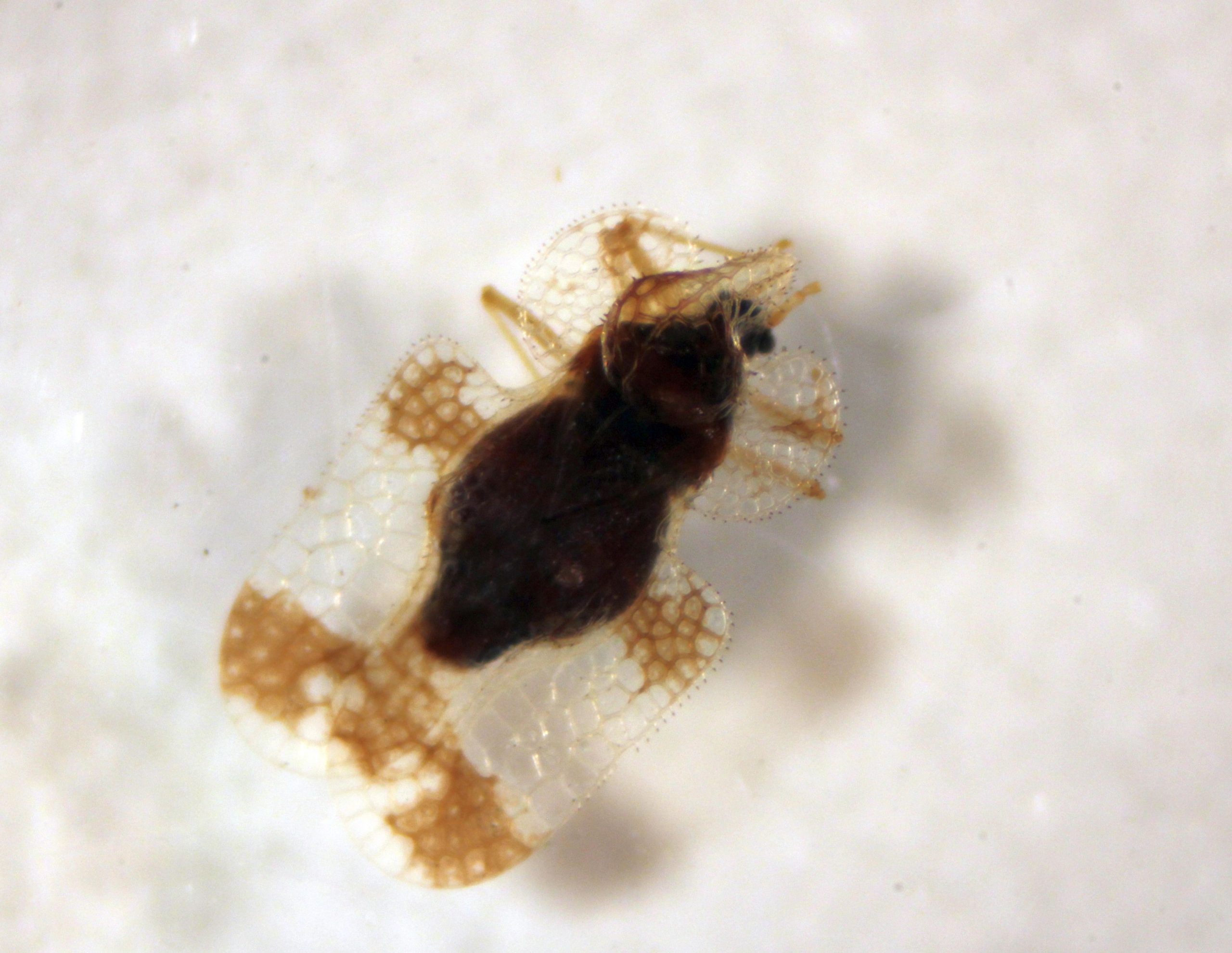
Miridae
Miridae are small, widely distributed plant feeders. Some, e.g. the Lygus bugs, are economically important agricultural pests. They closely resemble some other families in this order, especially the Lygaeidae. The Miridae have a distinctive separate sclerite, called the cuneus, on the outer edge of the forewing, where the leathery part of the hemelytron joins the membranous part. Lygaeidae lack this separate sclerite. The mullein bug, Campylomma verbasci, commonly found on campus, is also a member of this family.
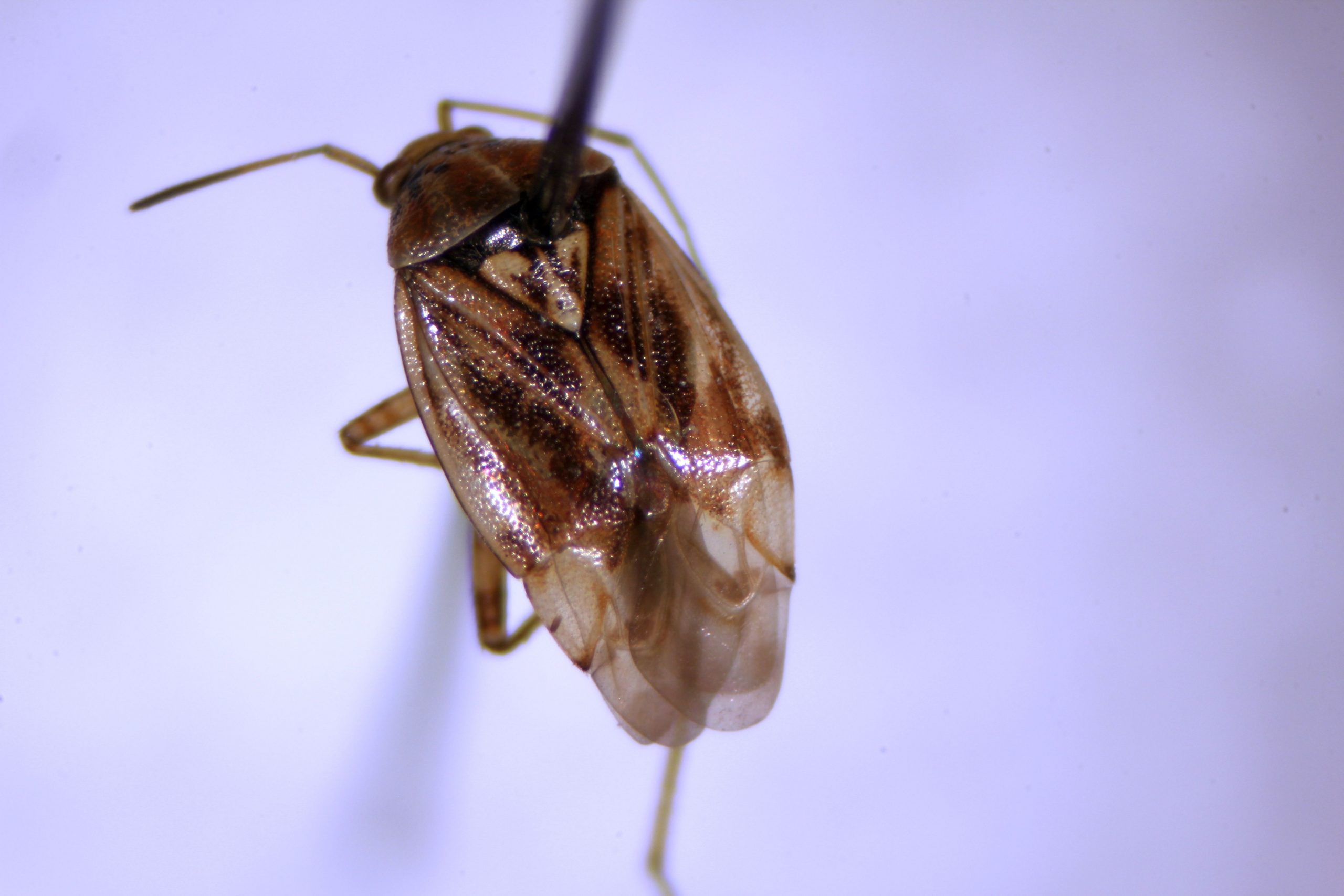
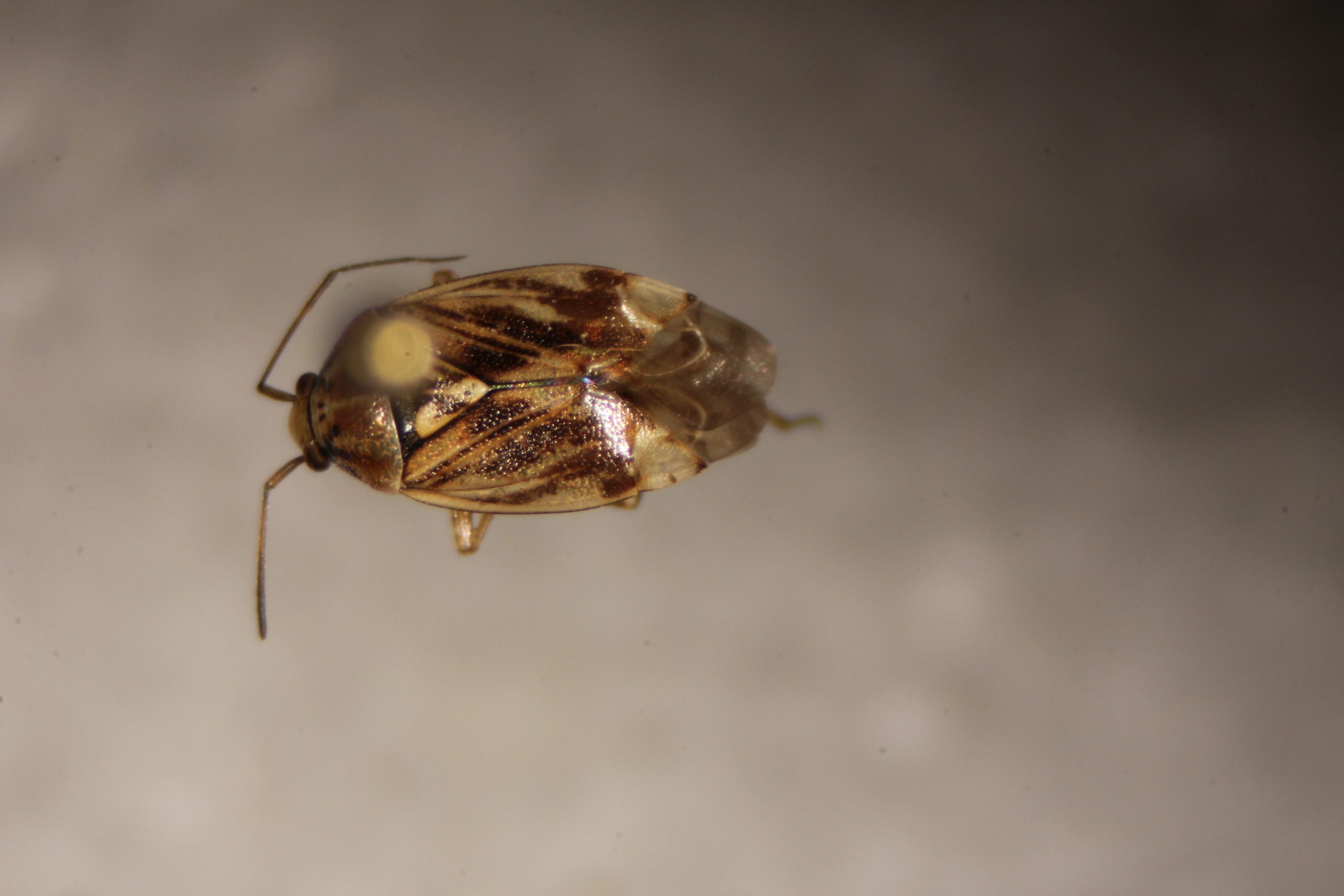
Nabidae
The Nabidae, or damsel bugs, are elongate bugs with raptorial forelegs. This adaptation should tell you that they are predatory. Your key distinguishes them as having a broad, flat pad on the femur; this is a very difficult feature to see!
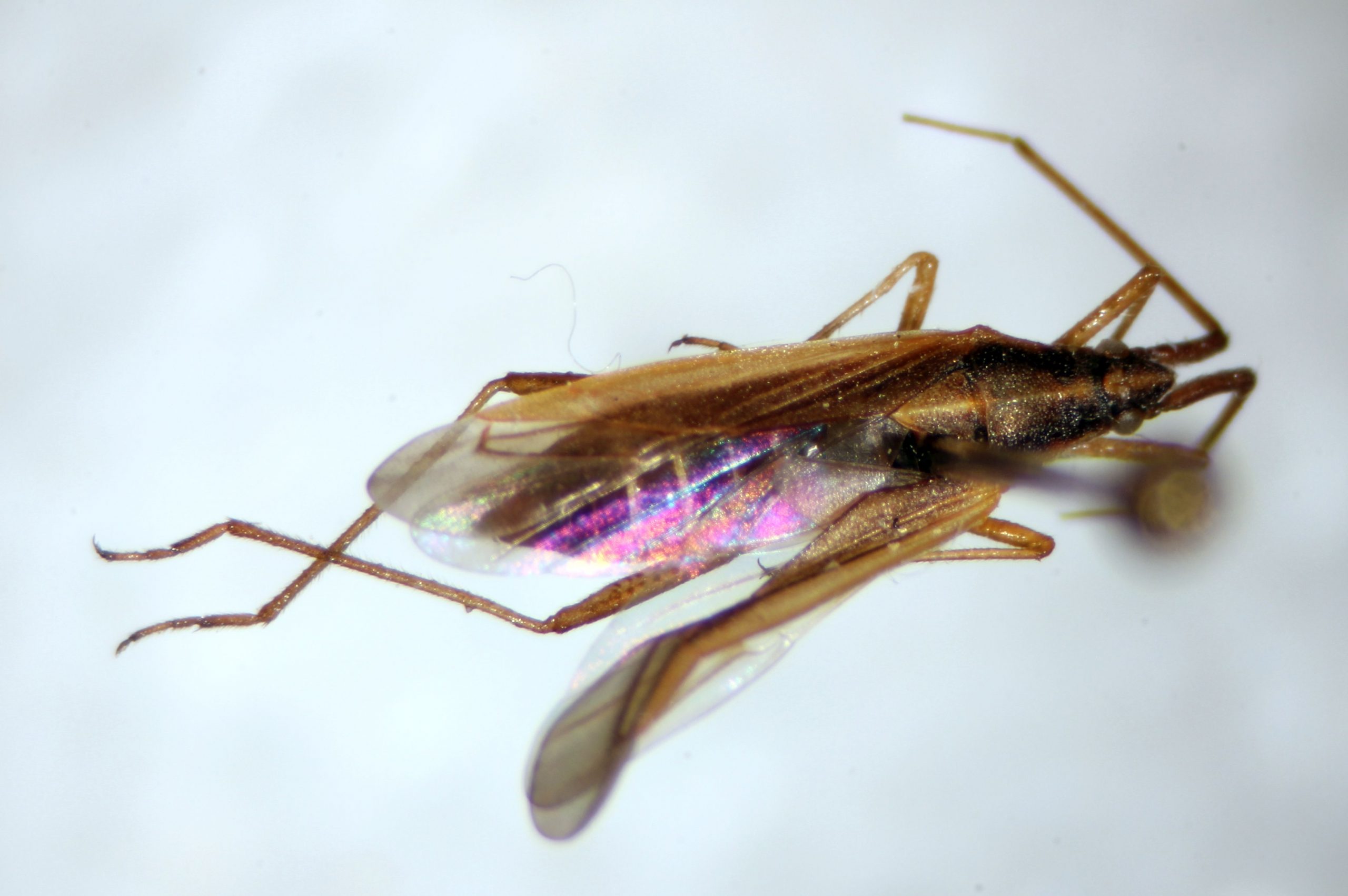
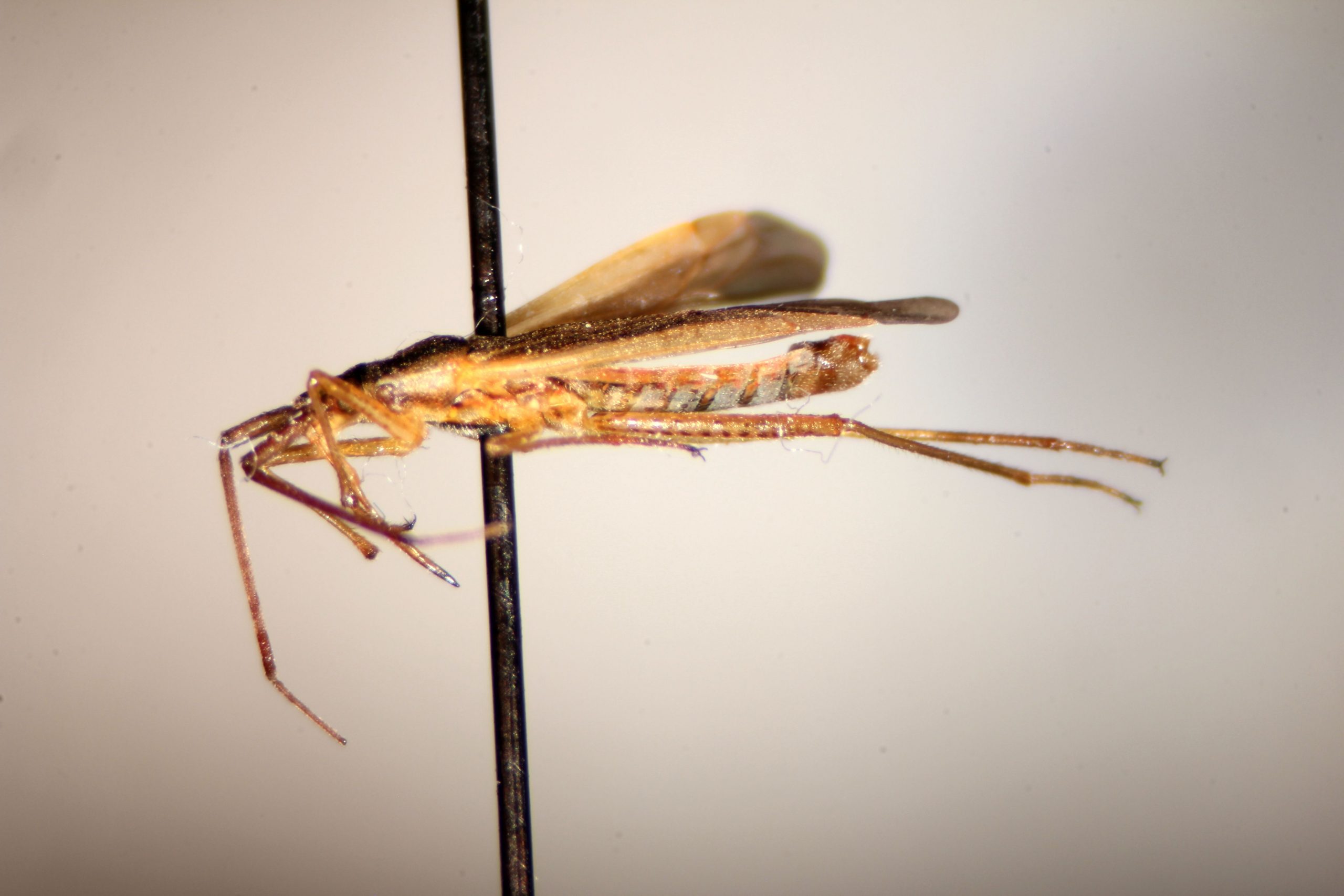
Anthocoridae
The minute pirate bugs belong to the family Anthocoridae. These are tiny, predatory bugs, and are very important in biological control of pests in greenhouses. They have a distinctive black and white colour pattern on the forewings.
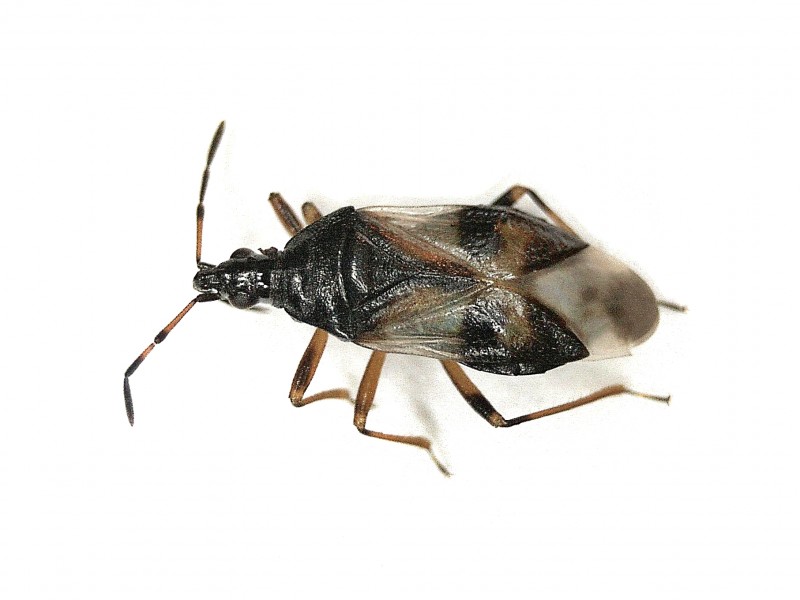
This image is created by user B. Schoenmakers at waarneming.nl, a source of nature observations in the Netherlands., CC BY 3.0 <https://creativecommons.org/licenses/by/3.0>, via Wikimedia Commons
Cimicidae
Given that Hemiptera all have piercing/sucking mouthparts, and that they rely on a variety of fluid food sources, it should come as no surprise that some members of the order are blood-feeders. The Cimicidae, or bed bugs, are all ectoparasites of vertebrates, and are important pests of humans. Bed bug populations have undergone a resurgence lately, and you should learn how to inspect any new accommodations for signs of bed bugs and how to keep your belongings from becoming infested. Bed bugs can be notoriously difficult to eradicate once they are established.
Bed bugs also have extremely interesting reproductive behaviours. Instead of mating with the female using the genitalia, male bed bugs use a process called traumatic insemination. The sperm are introduced to the female through a hole that the male makes in the female’s body wall.
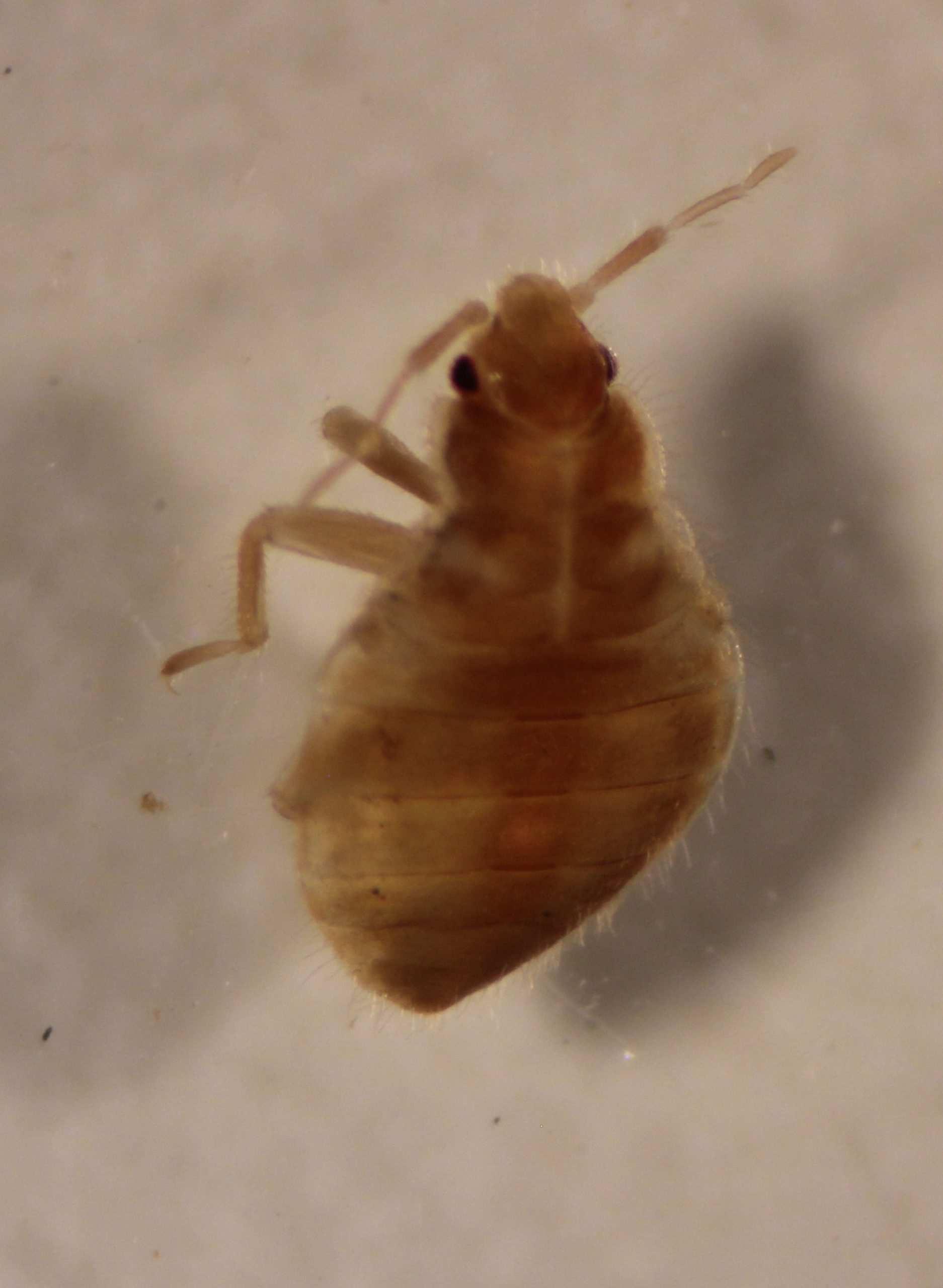
Reduviidae
A second family of Hemiptera of medical importance is the Reduviidae, or assassin bugs. Members of this family are predaceous, and sometimes have raptorial forelegs. A few are hematophagous. The most important of these are in the subfamily Triatominae, also called the kissing bugs. Species that cohabit with humans vector a parasite, Trypanosoma cruzi, which causes Chagas disease. Bites of even the non-hematophagous species of Reduviidae can be extremely painful.
Notice that Reduviidae have a short, three-segmented proboscis that is carried tucked into a small groove between the forelegs. They are often sculpted or prickly, to stay concealed in vegetation as they hunt for prey.
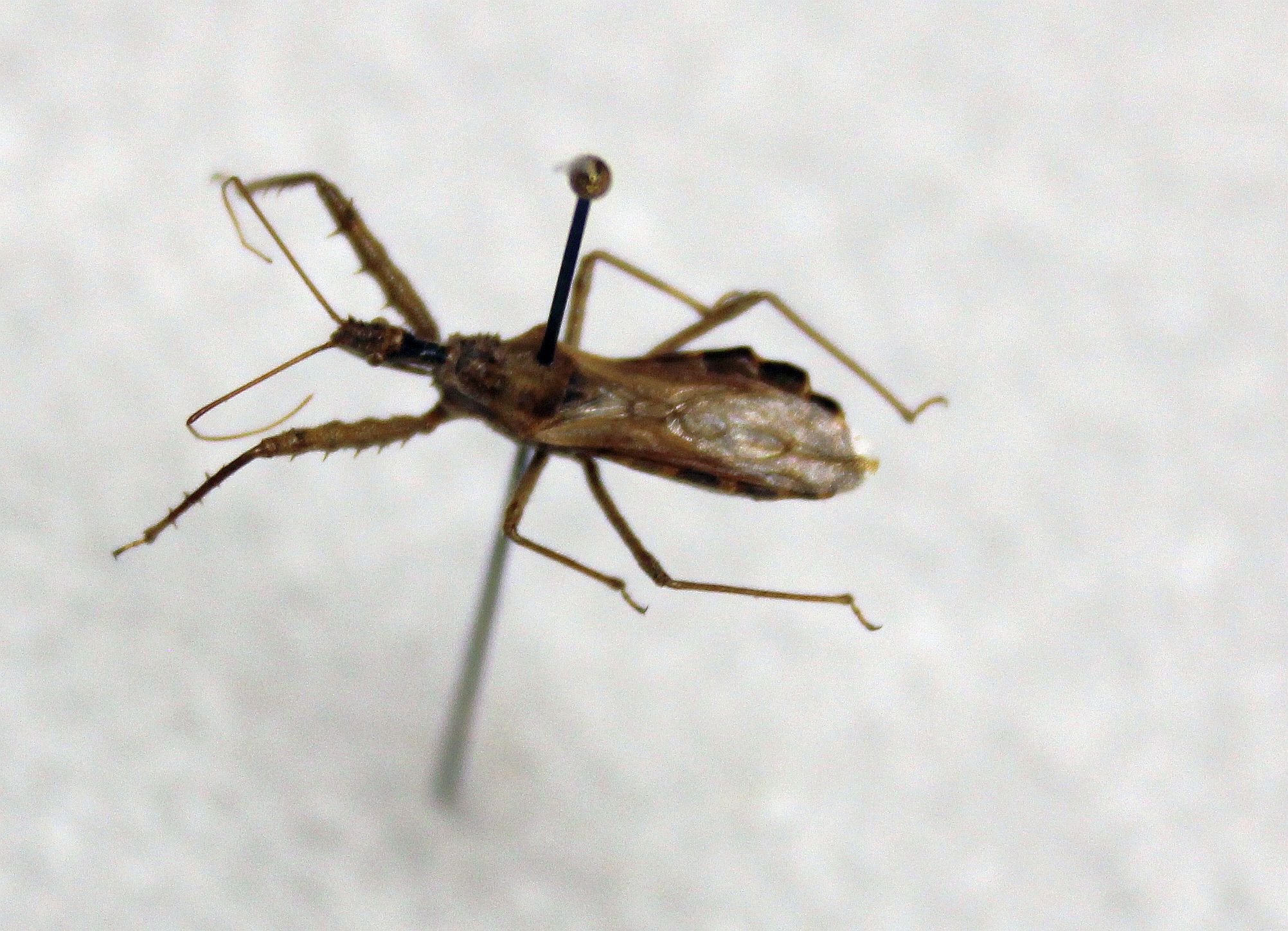
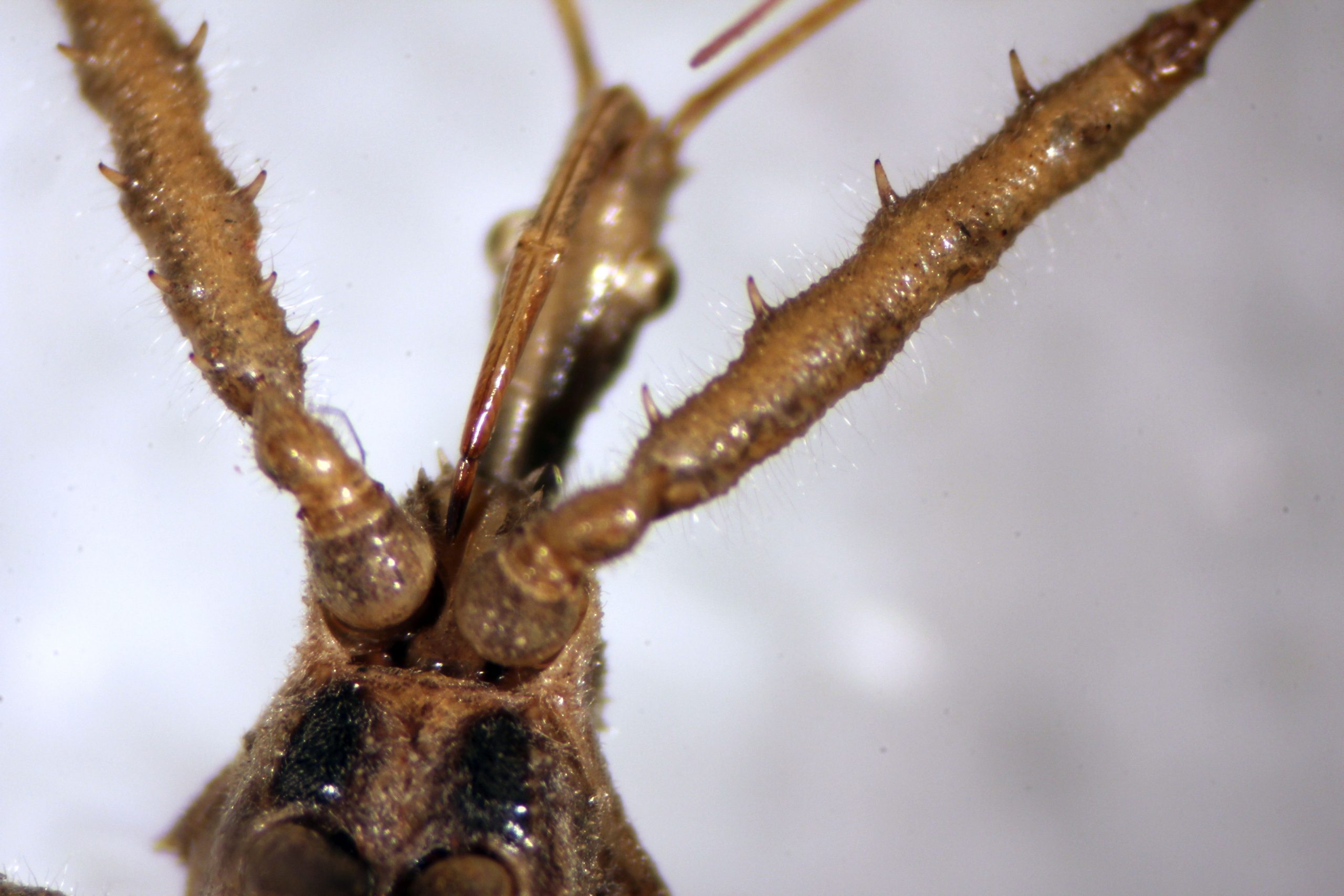
Lygaeidae
Lygaeidae, or seed bugs, are small to medium sized bugs. Some species, especially those that feed on plants that are toxic or distasteful to vertebrates, have bright, aposematic colouration. Most are seed predators, but a few are phytophagous on other plant parts or predaceous They closely resemble Miridae, among other groups, but adults can be easily distinguished from Miridae by the lack of a cuneus in the forewing.
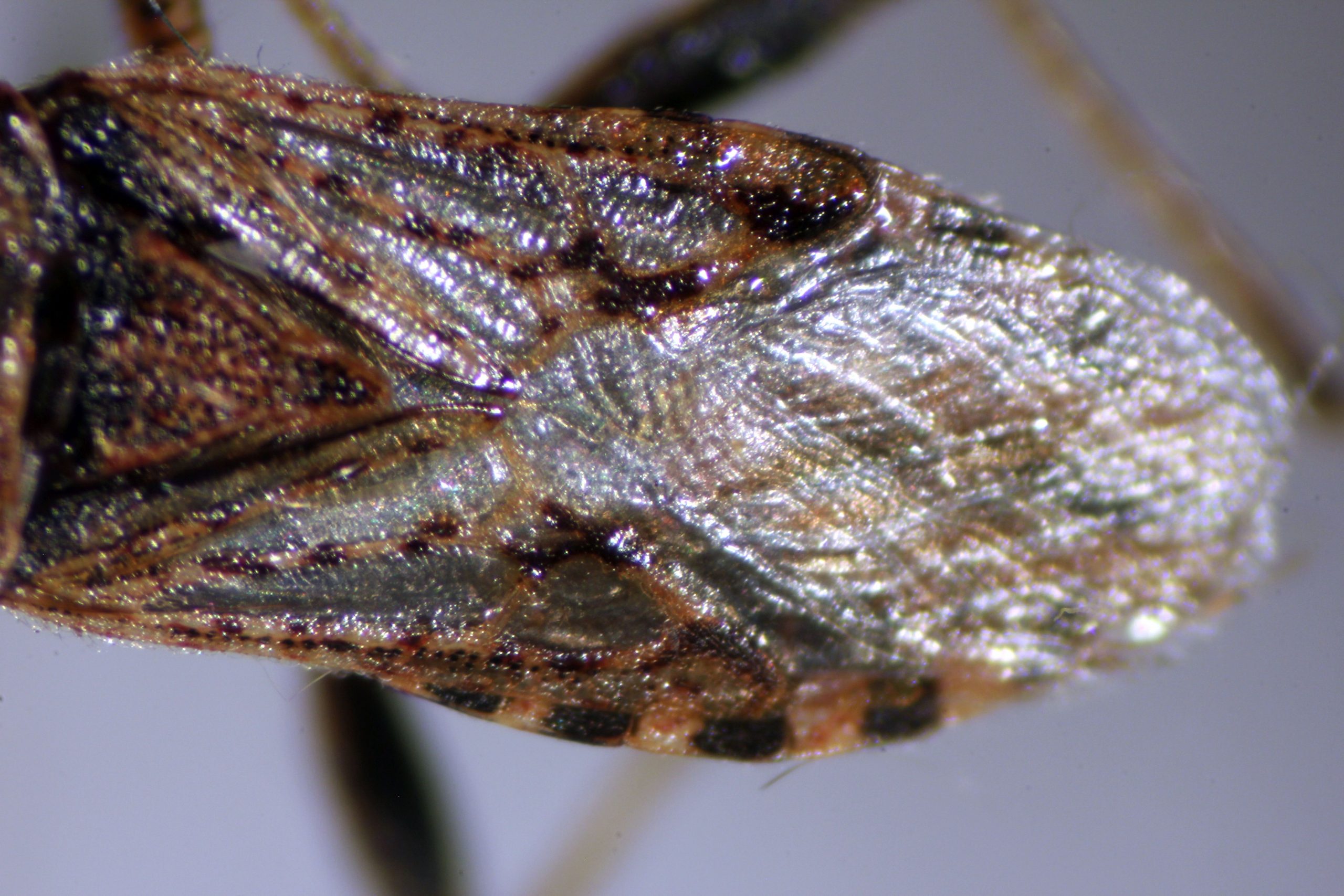
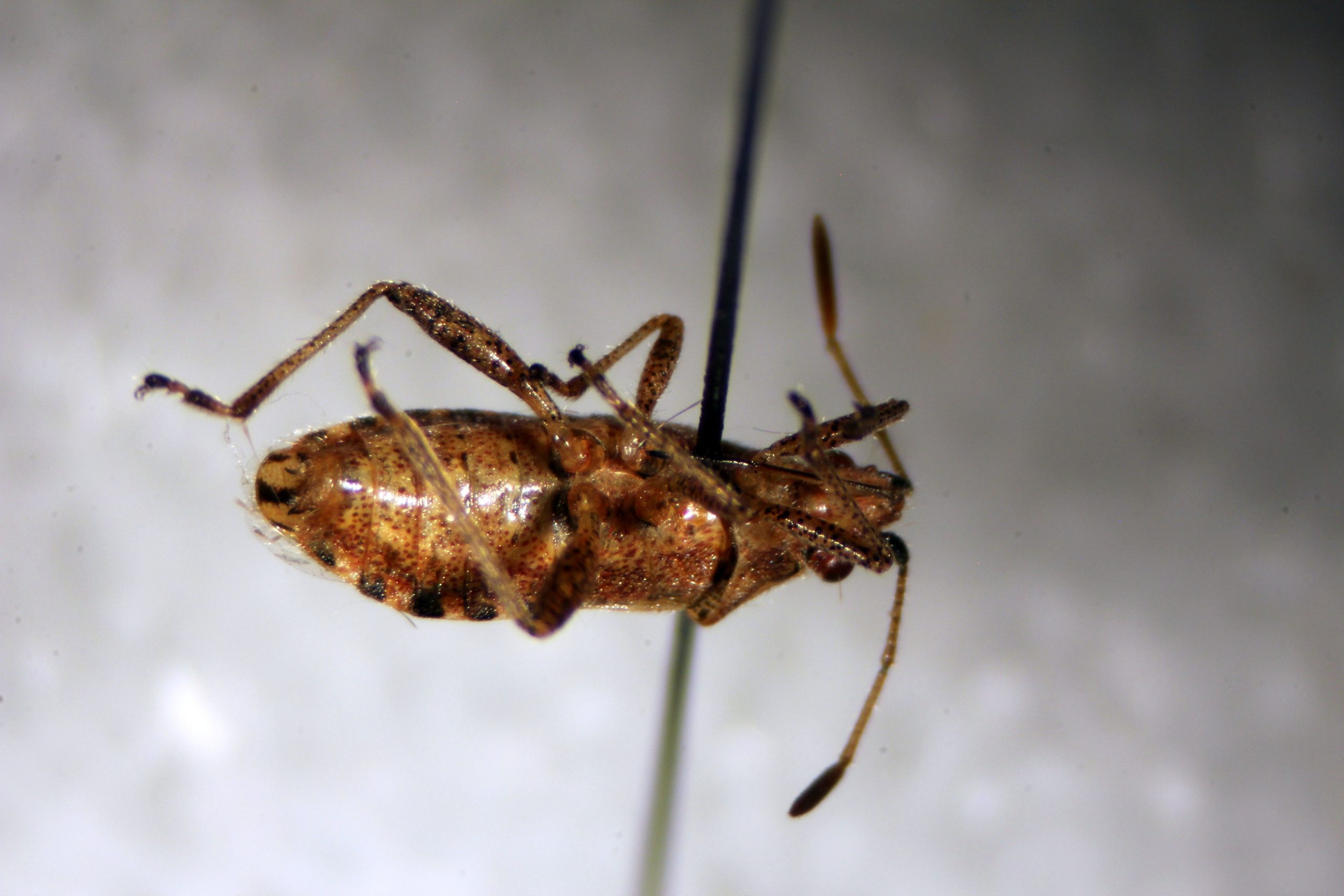
Coreidae
Coreidae, the leaf-footed bugs, often have expanded, leaf-like, hind tibiae. Most are seed predators (e.g. Leptoglossus occidentalis, the western conifer seed bug). Some species may be phytophagous on other plant parts or even predaceous. They are fairly large, and are often mistaken for Reduviidae, but have a longer proboscis that is not carried in a groove between the forelegs. Some are gregarious, spending the winter in sheltered locations in groups. They have prominent scent glands, and are also sometimes called stink bugs for that reason.
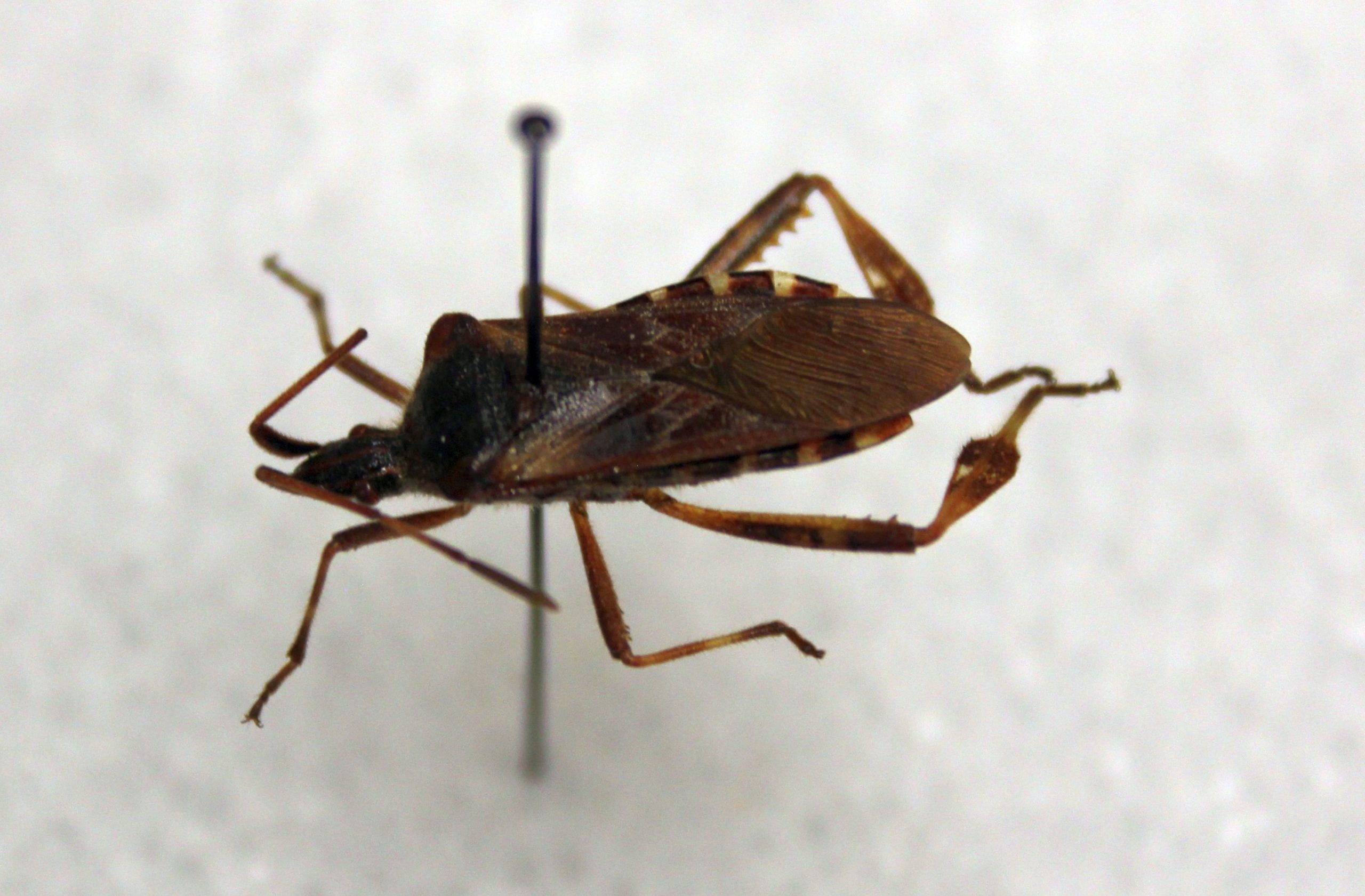
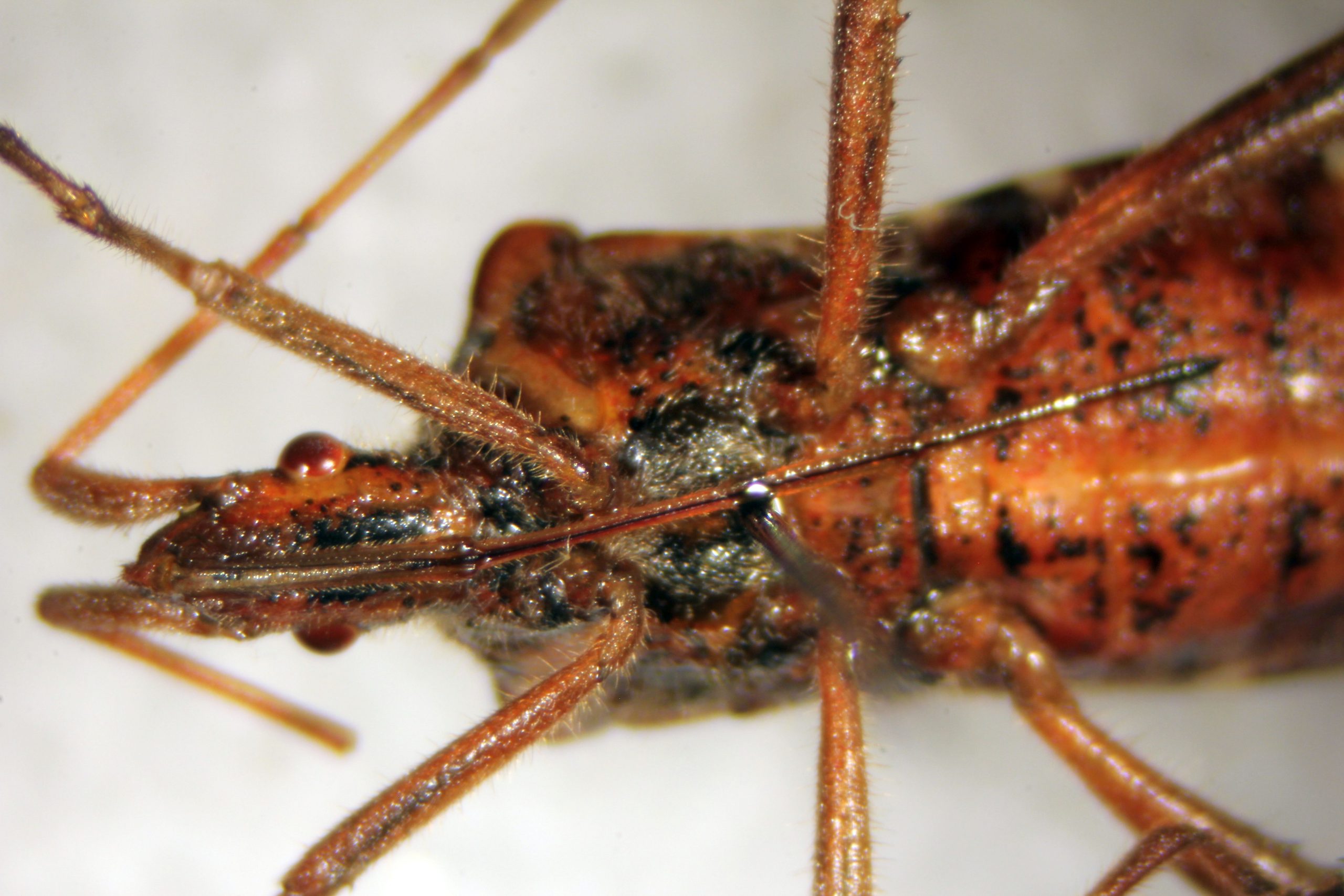
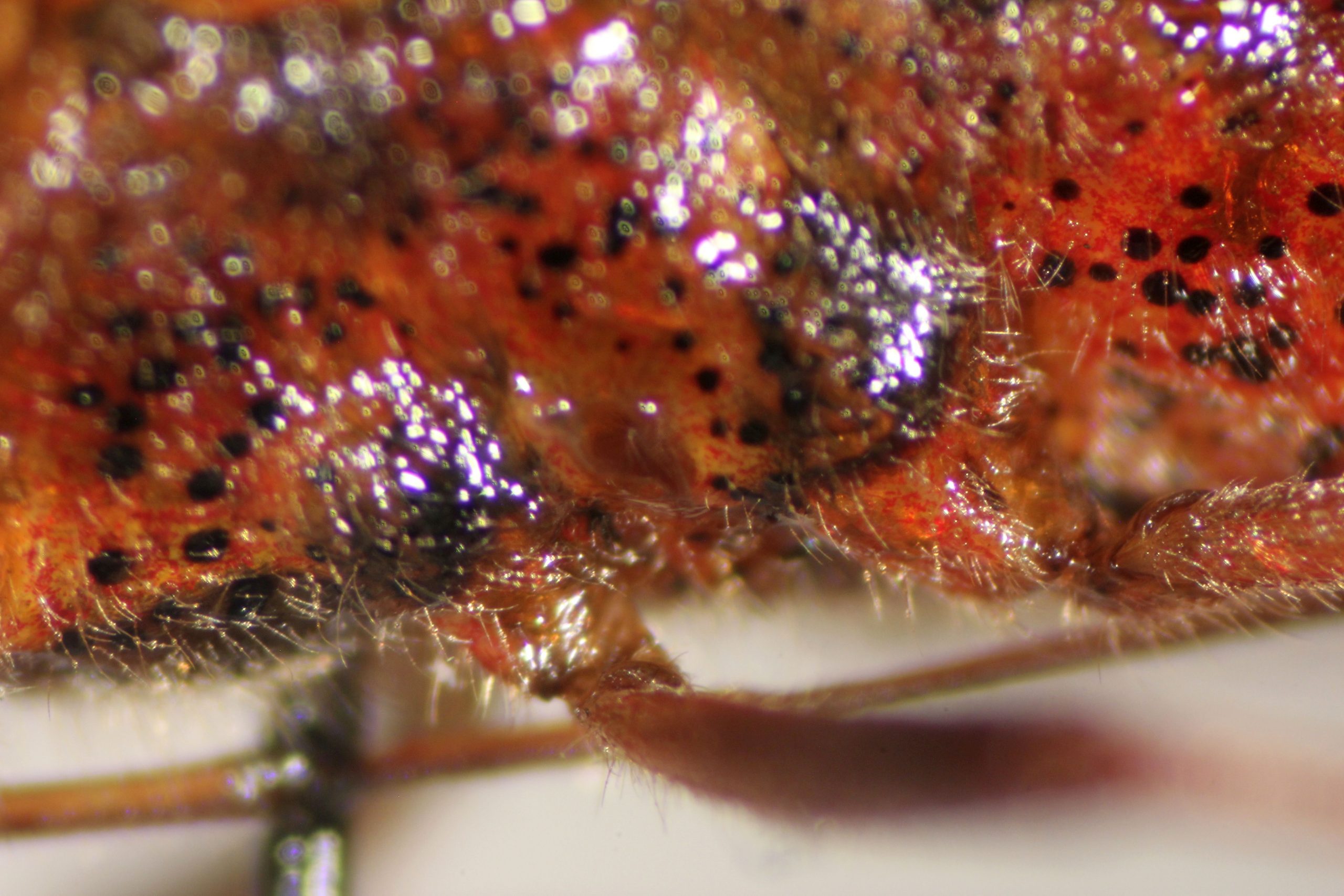
Pentatomidae
Pentatomidae, the stink bugs, have notable defensive secretions and scent glands. They also have a recognizable, pentagonal shape. They look quite similar to the Acanthosomatidae, however, and the only reliable way to differentiate the two families (once you have narrowed the identification to one of these two families) is to count the tarsal segments. Pentatomidae have three-segmented tarsi, while Acanthosomatidae have two-segmented tarsi. Both families are mostly phytophagous, though they can sometimes be predaceous.
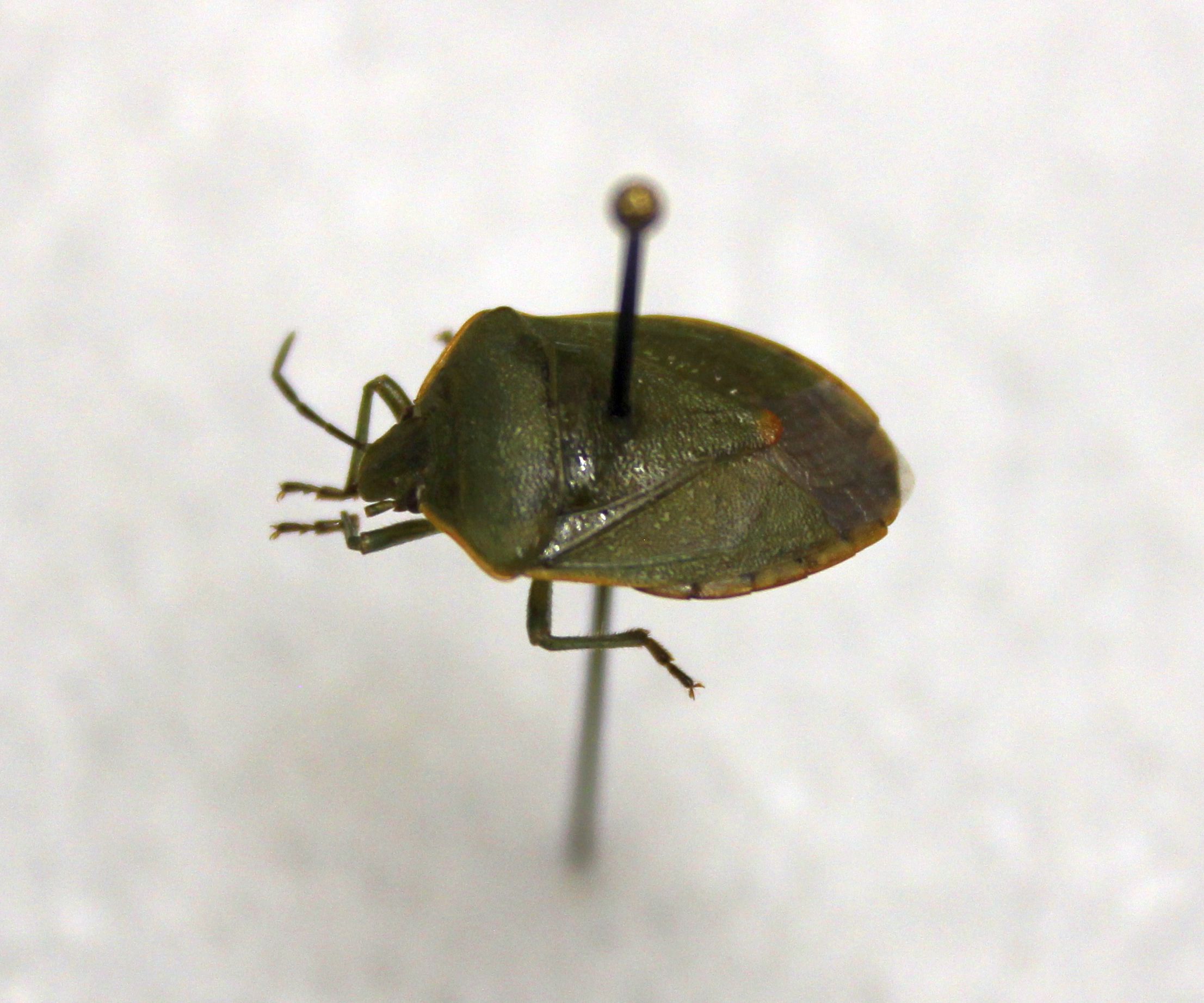
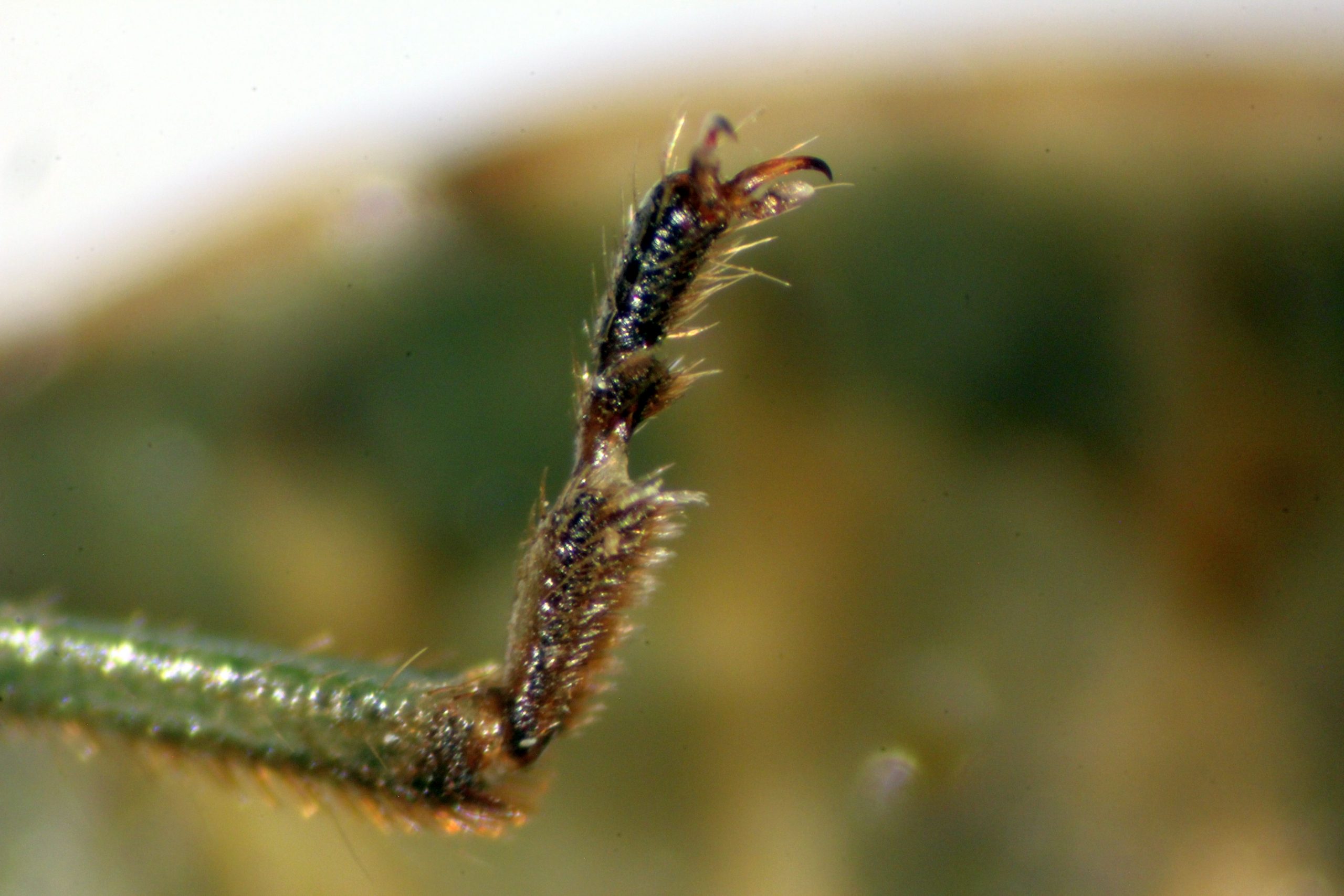
Acanthosomatidae
Acanthosomatidae are also known as stink bugs, because they also have prominent scent glands. Another common name is parent bugs, for the degree of parental care they show their offspring. Again, this family is quite similar to the Pentatomidae, and the only reliable way to differentiate the two families (once you have narrowed the identification to one of these two families) is to count the tarsal segments. Pentatomidae have three-segmented tarsi, while Acanthosomatidae have two-segmented tarsi. Both families are mostly phytophagous, though they can sometimes be predaceous. Elasmostethus cruciatus, the red-cross shield bug, is commonly collected in Prince George.
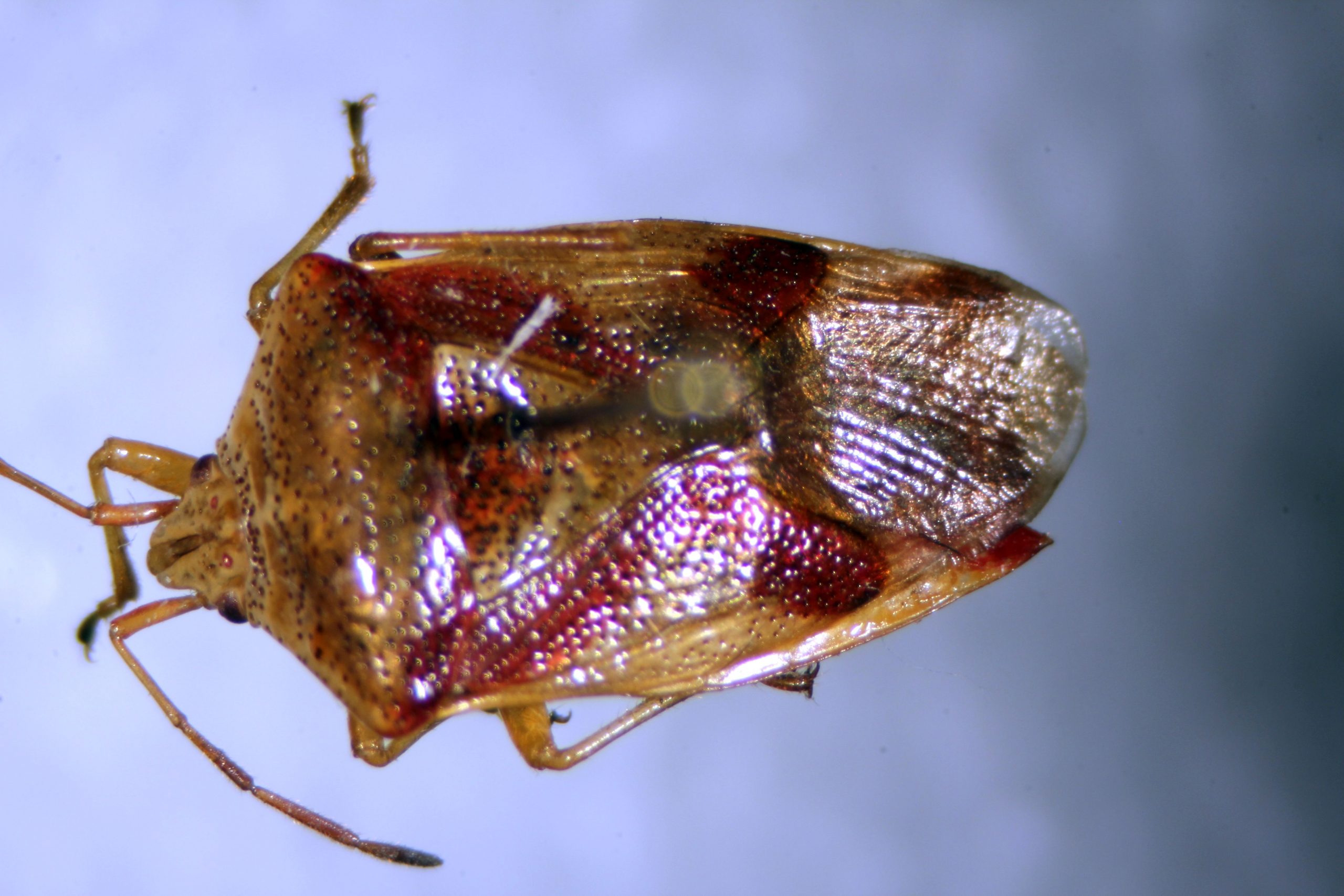
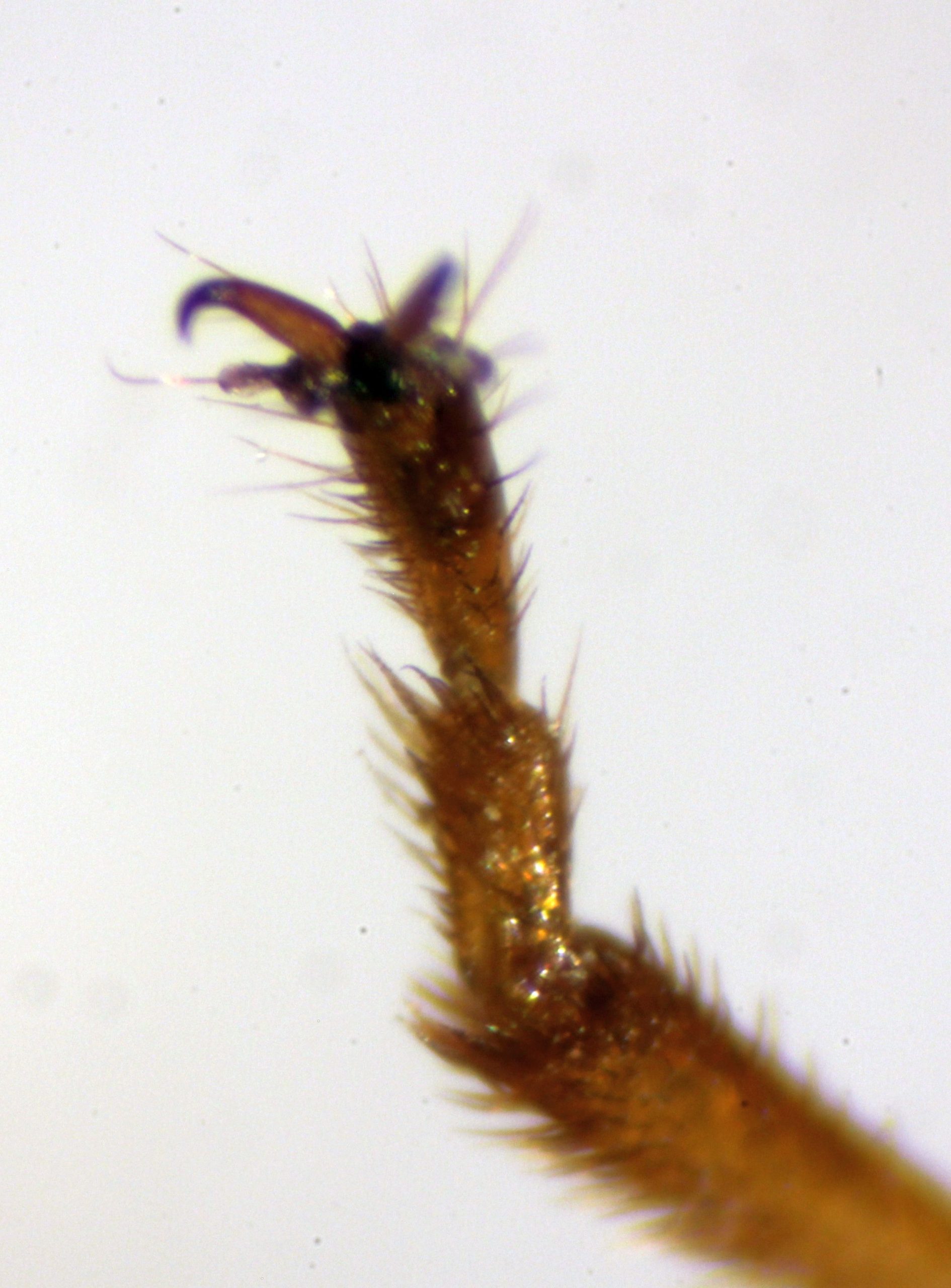


Feedback/Errata